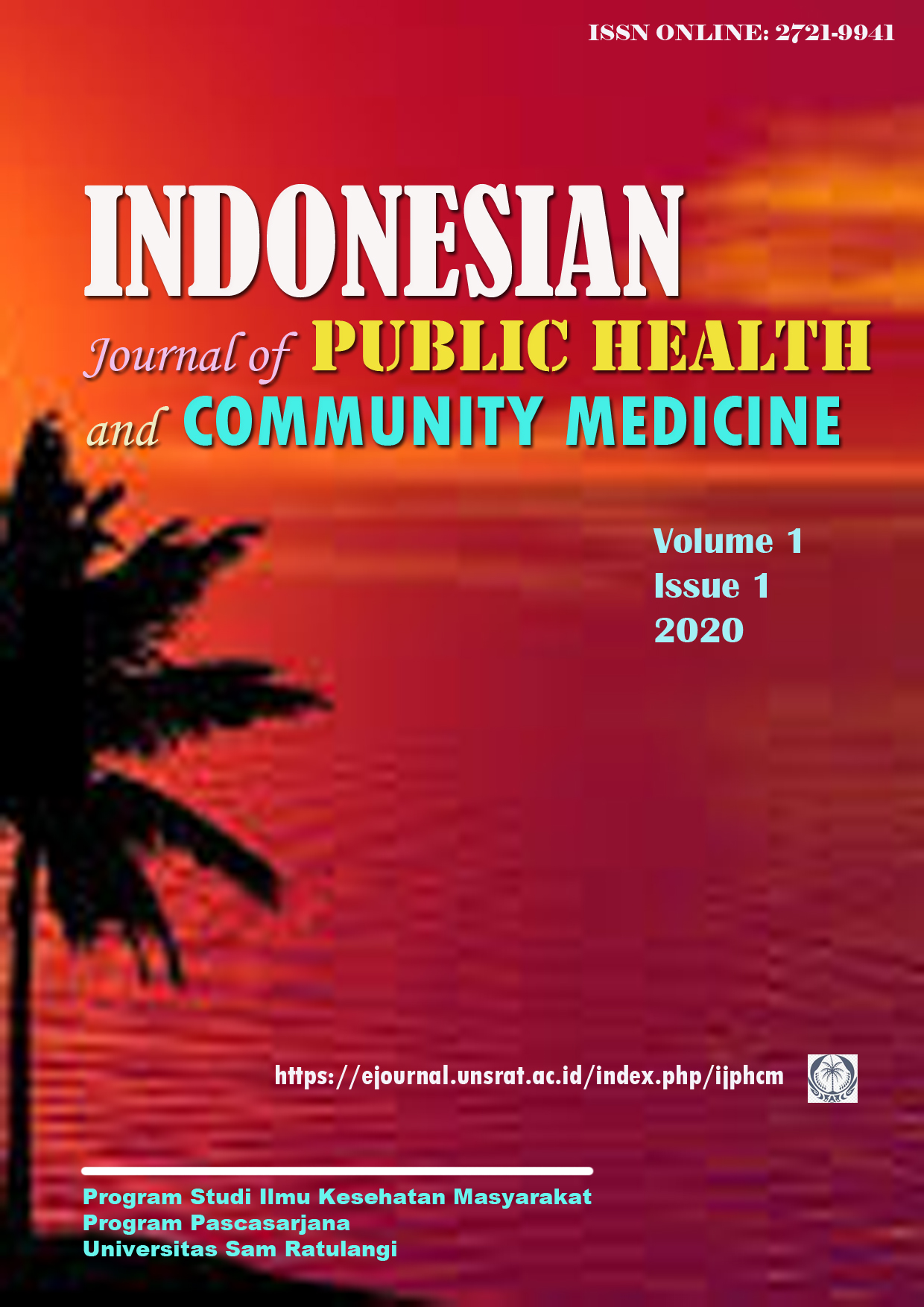Kadar Pestisida Orgonofosfat Dalam Tumbuhan Kangkung (Ipomoea aquatica) Di Lahan Pertanian
DOI:
https://doi.org/10.35801/ijphcm.1.1.2020.27246Keywords:
Orgonophosphate Pesticide, Ipomoea AquaticaAbstract
Background: Pesticide is a chemical substance used to kill pests, in the form of plants, insects, and animals in our circled animal that has a health impact for humans either directly exposed or consuming food in the form of vegetables-vegetables. So in the regulation of the Minister of Agriculture number 07/Permentan/SR. 140/2/2007 concerning the requirements and procedures for the Registration of Pesticides, pesticides are chemicals or other substances and bodies renic and viruses. This research aims to know how much residual pesticide levels of orgonophosphate in plants in the agricultural land Mahena subdistrict Tahuna. Method: Research method, this research is a quantitative research laboratory based. The research was conducted in September 2019 until October 2019. Sampling in this research is taken from 4 locations with a total of 4 sanpel in the farm land Mahena subdistrict Tahuna. Result: The results of this study using the maximum residue limit (BMR) with the type of pesticide insecticide active ingredient Dimacide 400 EC showed that the average value of laboratory test Results Location 1 (0.63014), location 2 (0.1464), location 3 (0.28339), location 4 (0.0137) can still be tolerated with a maximum residue limit. The results of this research are based on laboratory test faculty of MIPA UNSRAT. Conclusion: The results of this research can be concluded that to 4 samples of the level of pesticides orgonophosphate still meet the requirements of the maximum residue type of vegetables Kangkung in Menkes No 39 Tahuna 2015 because less than 1 ppm.References
Alegantina, S.; Raini, M.; dan Lastari, P., 2005. Penelitian Kandungan Organofosfat Dalam Tomat dan Selada yang Beredar di Beberapa Pasar di DKI Jakarta. Media Litbang Kesehatan. Vol XV (1): 44-49.
Budianto,Andri. 2017. Analisis Kandungan Timbal (Pb) Pada Tanaman Kangkung Air (Ipmoea Aquatic Ferrsk) Di sungai Lesti Kabupaten Malang Dengan Variasi Metode Destruksi Basah Tertutup Menggunakan Spektroskopi Serapan Atom (SSA).Jurusan Kimia Universitas Islam Negeri Maulana Malik Ibrahim Malang, Kota Malang.
Peraturan Tentang Residu Pestisida Pada Pangan Dalam UU No 8 Tahun 1999. Tentang Perlindungan Konsumen dan Surat Keputusan Bersama Menteri Kesehatan dan Menteri Pertanian No 27/PerMentan/PP.340/5/2009.
Herawati dan Nadira, A. 2010. Kajian Penggunaan Pestisida Oleh Petani Pemakai Serta Informasi dari Berbagai Stakeholder Terkait di Kabupaten Karo Sumatera Utara. http:/www.info.stppmedan .ac.id
Harsanti.E.S, dkk. 2015. Residu Insektisida Klorpifos Dalam Tanah Dan Produk Bawang Merah Allium ascalonicum L, Di Sentra Produksi Bawang Merah Di Kabupaten Bantul Yogyakarta. Vol 9 No. 1 Januari 2015, Kota Yogyakarta.
Kaligis, J, NN, Dkk. 2017. Hubungan Pengetahuan, Sikap, dan Masa Kerja Dengan Penggunaan Alat Pelindung Diri Petani Saat Penyemprotan Pestisida di Kelurahan Rurukan Kecamatan Tomohon Timur. IKMAS
Katipana, D, Daviesten, 2015, UJi Kandungan Logam Berat Timbal (Pb) Pada Kangkung Air (Ipmoea Aquatic Ferrsk) Dikampus Unipatti Poka,Vol 1 nomor2 Maret 2015.
Marbun,L.H,dkk. Analisis Kadar Residu Pestisida Organofosfat Pada Sayuran Serta Tingkat Perilaku Konsumen Terhadap Sayuran Yang Beredar Di Pasar Tradisional Pringgan Kecamatan Medan Baru. Departemen Kesehatan Lingkungan FKM USU. Medan.
Utomo Budi, Oelviani Renie. 2015. Sistem Pertanian Terpadu di Lahan Pekarangan Mendukung Ketahanan Pangan Keluarga Berkelanjutan: Studi Kasus di Desa Plukaran Kecamatan Gembong Kabupaten Pati Jawa Tengah. Pros Sem Nas Masy Biodiv Indon.
Yusnani. 2013. Identifikasi Residu Pestisida Golongan Organofosfat Pada Sayuran Kentang Di Swalayan Lottemart Dan Pasar Terong Kota Makassar. Balai Teknik Kesehatan Lingkungan dan Pengendalian Penyakit, Makassar

